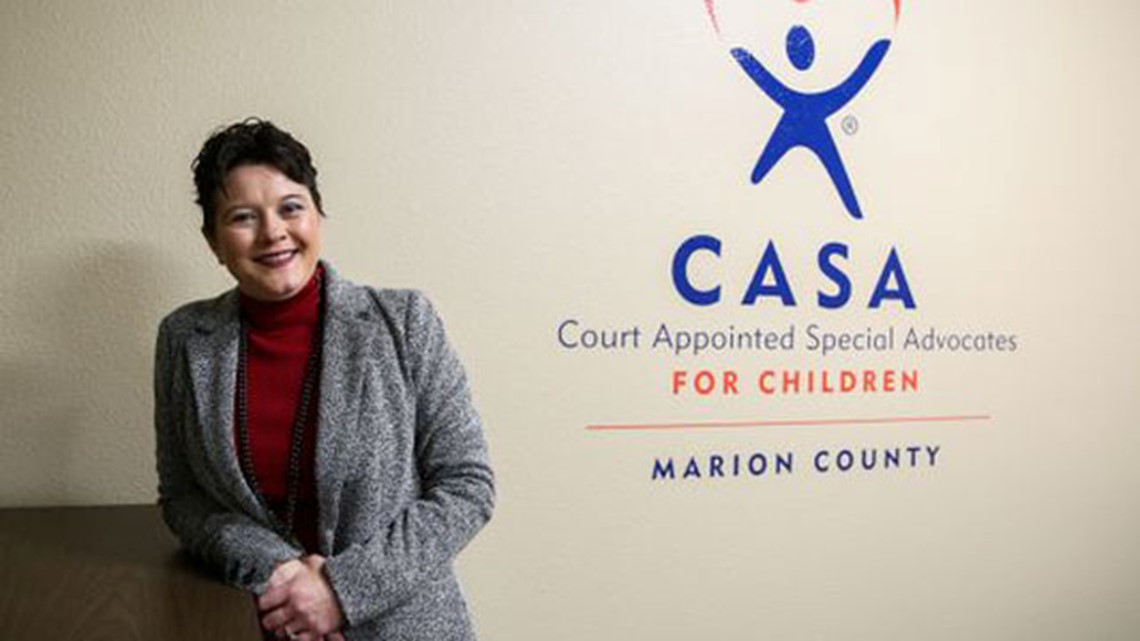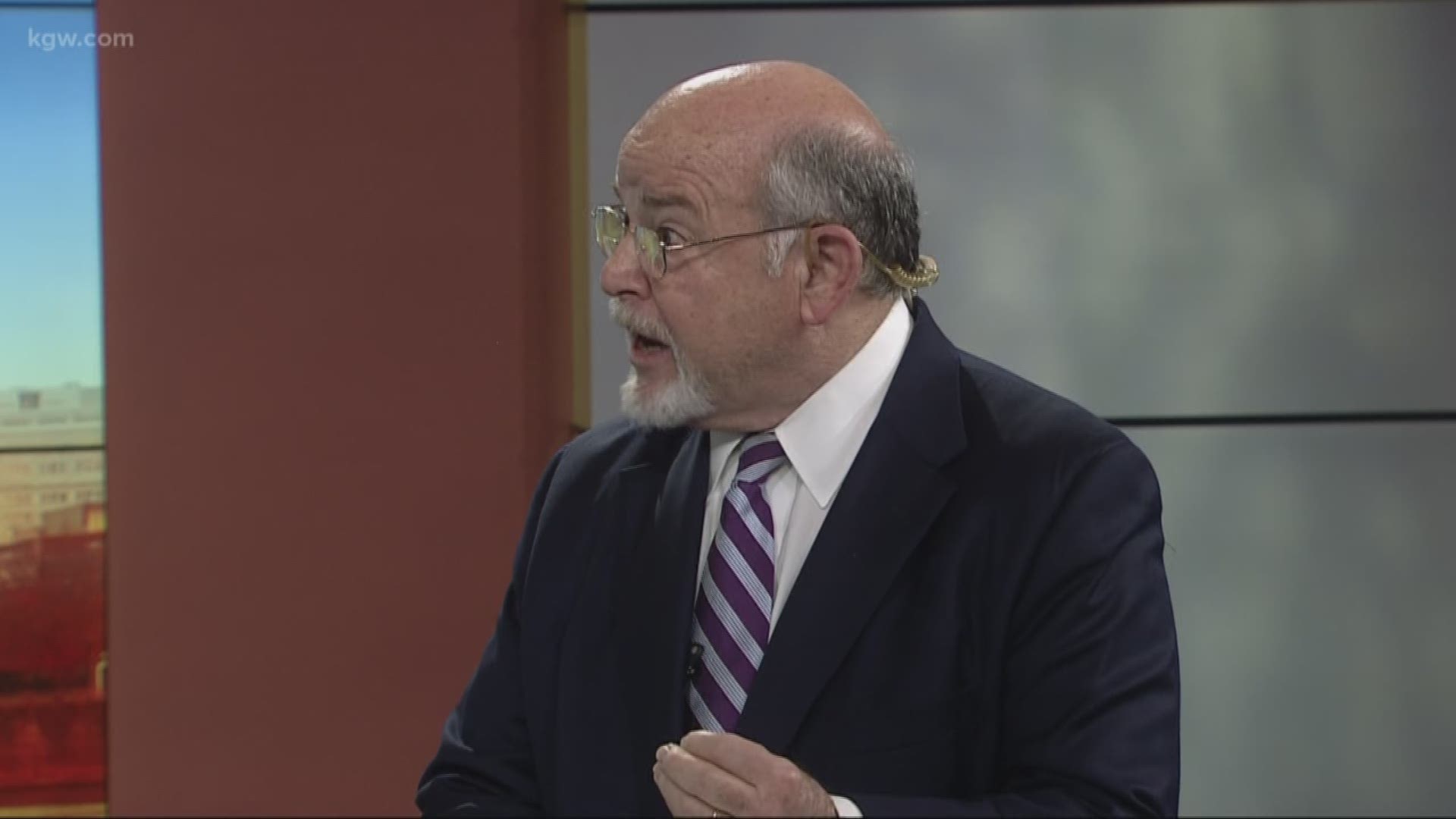SALEM, Ore. — Millions of people in Oregon will be impacted by the policies of the candidate who is elected governor on Nov. 6, and many in Salem are on the front lines.
Major policy proposals from the top two candidates — Democrat Gov. Kate Brown and Republican Rep. Knute Buehler — could dramatically impact small business owners, state employees and individuals who work with vulnerable populations, in particular.
Candidates deliver attention on homelessness crisis
Both Brown and Buehler have come forward with proposals on how to address the state's homelessness crisis, which has only gotten worse in recent years.
According to a biennial point-in-time survey, nearly 14,000 people in Oregon were classified as experiencing homelessness in 2017, a 5.9 percent increase from two years prior. Unsheltered homelessness increased by 8.3 percent, while sheltered increased by 2.9 percent.
KGW Voter's Guide: A look at several key Oregon races and measures
Buehler blames the current administration for failing to address homelessness, which he describes as a "humanitarian, public health and public safety crisis."
For Jimmy Jones, a program director with the nonprofit Mid-Willamette Valley Community Action Agency, both candidates' plans could help abate homelessness if fully implemented.
He likes the financial commitment from Brown, and the aspiration from Buehler. He has concerns about both, too.
With Buehler's plan, Jones likes his idea to create a Chief Homeless Solutions Officer — a point person who reports directly to the governor that will be tasked with aligning the many organizations and levels of government working to combat this issue.
There are too many agencies and not enough agreement on policies and priorities, Jones said.
Jones is also in lockstep with Buehler on his goal of ending unsheltered homelessness by 2023. More than half of all homeless people in Oregon are unsheltered, many living out of cars or on the street.
"If you’re doing this work at all, you should be doing it to end homelessness," Jones said. "If you’re not focused on getting rid of it … you’re playing a losing game."
But, Jones said, Buehler's plan lacks specifics on financial commitment, and his support for laws prohibiting the sitting or lying on sidewalks is unhelpful and counterproductive. He said those policies can further victimize homeless people who are often most vulnerable.
Buehler's plan also includes creating an additional 4,000 temporary and 4,000 supportive-housing beds, building 20,000 new housing units for lower- and middle-income individuals and families, and providing $50 million in direct rental assistance.
Buehler said he will dedicate more funds to "street-level" mental health treatment and enhance job training programs to end the cycle of poverty that can lead to homelessness.
For Brown, Jones sees in her plan a commitment to properly funding homelessness solutions. Before a couple of years ago, the state hadn't directed enough money toward homelessness, Jones said.
The state Legislature approved $20 million for homelessness and emergency housing services for the 2015-17 biennium. In 2017, lawmakers added $10 million and a one-time allocation of $30 million, bringing the total for the 2017-19 biennium to $45.2 million.
The governor's plan also has more specifics, which is important, Jones said, because the state has traditionally underfunded homelessness relief programs.
The governor's plan prioritizes ending childhood homelessness and housing homeless veterans, investing in permanent supportive housing and increasing the number of affordable homes in Oregon.
Brown's plan includes: developing 2,200 to 2,600 units of affordable owner and rental housing, raising $50 million more for Emergency Housing Assistance and the State Homeless Assistance Program, using bonding to acquire or preserve affordable housing options, incentivizing housing development, and providing rental assistance to families.
Jones said Brown has done "a lot" to help put agencies in a better position to combat homelessness, but there is far more that needs to be done, especially for the chronically homeless and children.
Both candidates made a point of singling out youth homelessness as a priority because of the ramifications homelessness can have on a person for the rest of their lives.
"Whoever wins, there is going to be a continued desire to focus on children and try to draw down the youth homeless rate as best we can," Jones said. "I think that both of them would be committed to this issue."
For gun shop owner, the 'lesser of two evils' on gun laws
At Tick Licker Firearms in southeast Salem, manager Kevin Dahl works within the state's gun laws on a daily basis.
If the next governor were to champion and help pass gun control measures while in office, he says will follow those, too.
And while he is supporting Buehler for governor, that doesn't mean he's excited about either candidate's stance on guns.
"You gotta take the lesser of two evils," he said.
Among the pro-gun rights crowd, neither Brown nor Buehler comes off favorably.
The Oregon Firearms Federation, a top gun rights organization in the state, gives both candidates "F-" grades for their stances on gun control measures.
Brown, Buehler agree on banning "bump stocks"
Brown has pushed for and passed a number of gun control measures while in office, including closing the domestic violence gun purchasing "boyfriend loophole," expanding background checks and creating an "extreme risk protection order" for court-ordered gun removal.
She is an outspoken proponent of gun safety laws and has received major support from national gun control groups, including a $250,000 campaign contribution from Everytown for Gun Safety in September.


Buehler voted in support of the "boyfriend loophole" bill during the 2018 session, one of only three Republicans to do so.
But he voted against expanded background checks in 2015 and the "extreme risk protection order" bill in 2017.
On the latter, which allows for the removal of guns from people considered dangerous to themselves or others, Buehler said the bill was a good idea, but flawed. He said there should have been mandatory mental health treatment included in the law, and more done to ensure due process for the people targeted with these orders.
Buehler said in the second gubernatorial debate he was "more than willing " to support gun control measures that will have an impact on improving public safety. These include banning "bump stocks," raising the minimum age for the purchase of an assault weapon to 21 and implementing a mandatory three-day waiting period for the purchase of a handgun.
Brown is also in support of banning "bump stocks," wants to see the minimum purchasing age increased to 21 and backs an assault weapons ban.
"Everyone deserves the right to be safe from gun violence in this state, in our schools, in our communities, in our religious institutions," Brown said in the second gubernatorial debate.
Dahl doesn't see it that way. He said the state should leave the further regulation of guns to the federal government. And while he doesn't sell or use them, Dahl thinks that people should have the right to purchase bump stocks.
"Her laws may seem beneficial, but she wants stricter and stricter gun laws," he said. "Stricter gun control, in the end, hurts my business."
It's not just the gun issue that placed Dahl into Buehler's camp. He also doesn't want to see any new taxes, something that he thinks there's been too much of during Brown's tenure.
"I don't think her track record the last four years has helped Oregon," Dahl said.
PERS reform plan worries local firefighter
Reforming the state's public pension system is one of the biggest challenges facing the next governor, and that's according to the people fighting to fill the job. During one of their debates earlier this month, the main candidates ranked, on a scale of 1-10, how bad the Public Employee Retirement System situation had become.
Brown gave it an 8, Buehler a 9.
The major concern is the unfunded liability, which currently sits at around $22 billion.
The candidates' plans to reform the system largely fall along traditional political lines — Buehler wants to reduce benefits for employees to lessen the burden on government employers, while Brown wants to focus on increasing investments and saving money in other ways.
For Brandon Silence, a mid-30s, politically active firefighter with the City of Salem, his concern rests with how changes to the system may impact his retirement in a few decades.
He comes down strongly against Buehler's plan for this reason.
According to an online calculator constructed by public employee-backed Keep Oregon's Promise, if Buehler's plan went into effect, Silence could see his pension reduced by 38 percent were he to work for the state until the minimum retirement age for full benefits.
To Silence, making up the difference means a longer career in his dangerous line of work.
"Is that even something I’d be able to survive?" he said.
Buehler has stressed throughout the campaign that Oregon's education system needs rapid reinvestment and PERS reform is how that will get done.
His plan has a few main components: cap at $100,000 the salary used to calculate pension benefits, create a new, 401(k)-style benefits tier, and require public employees to pay into their own retirement.
These and other changes would save the state $1.2 billion every biennium, according to Buehler.
But it's the latter of those three proposals that could have the greatest impact on Silence's future retirement.
Silence is a Tier 3 employee, meaning he receives a less generous pension than employees in older tiers. He also pays 6 percent of his salary into a separate fund, called an IAP, which is similar to a 401(k).
Millions in employer contributions could be saved by diverting employees' 6 percent into the pension, but it would likely have a domino effect on other aspects of public employee compensation.
"They’re trying to solve a problem on the backs of the public employees with already the smallest benefit," Silence said.
Brown has said she is opposed to cutting employee benefits to pay down the unfunded liability.
Her proposal for addressing the problem involves hiring more positions in the Treasury Department to manage the state's investments, continuing to act on the recommendations of the PERS task force she established and increase cost-sharing by employees — similar to Buehler's suggestion, though less than 6 percent.
CASA system in need of a boost
Buehler has tried to make the gubernatorial race about Brown's failures leading the state, and the much-maligned foster care system is one of his favorite examples.
One of his cudgels is a Secretary of State audit released in January, which showed child welfare employees were subjected to a culture of bullying and intimidation and reforms to known problems were insufficient due to poor planning and execution.


But the foster care system doesn't just encapsulate the people in the Department of Human Services — another constituency is the CASA program, which is facing difficulties of its own.
"It’s like an onion – there’s so many layers to the challenges that we face," said Shaney Starr, executive director of CASA of Marion County.
Every child who enters the foster care system is supposed to be assigned a court appointed special advocate, or CASA. The CASA volunteer advocates on behalf of the child to the court, follows them through the system and frequently becomes a support for not just their charge, but parents and guardians as well.
But there are significant staffing issues and too few volunteers, so only half of the kids in foster care receive a CASA, Starr said. This largely stems from inadequate funding, she said.
Oregon provides about 12 percent of the nonprofit's budget, a fraction that Starr said doesn't match with what the state is requiring them to do.
"If this is a state statute, we need to have dependable funding from the state," Starr said. "There's a lot of work and money needed to do the recruiting and the training of these people."
Starr said CASA volunteers have shown to improve outcomes for kids in the system — they do better in school, spend less time in foster care and are resettled less often.
Both gubernatorial candidates have committed to bettering the foster care system if they are elected, the CASA program in particular.
Brown published in September a detailed child welfare policy plan, which includes doubling the number of CASAs in the state. In an interview with Oregon Public Broadcasting, Buehler also mentioned his desire to supply every foster kid in the state with a CASA.
After the January audit was released, Buehler proposed a $50 million infusion from the Legislature to fund a "rapid-improvement team." His suggestion did not move forward.
During the first debate, Buehler praised Brown for her efforts to improve the system, but said too many children are still slipping through the cracks.
Brown countered during the debate that she has been working within the foster care system for 20 years and knows full well there is more to be done.
Starr said additional funding is critical to improving the foster care system overall and her piece of it, but the funding must be sustainable.
"This is a state mandate, and every day we're failing," Starr said.
Contact the reporter at cradnovich@statesmanjournal.com or 503-399-6864, or follow him on Twitter at @CDRadnovich

